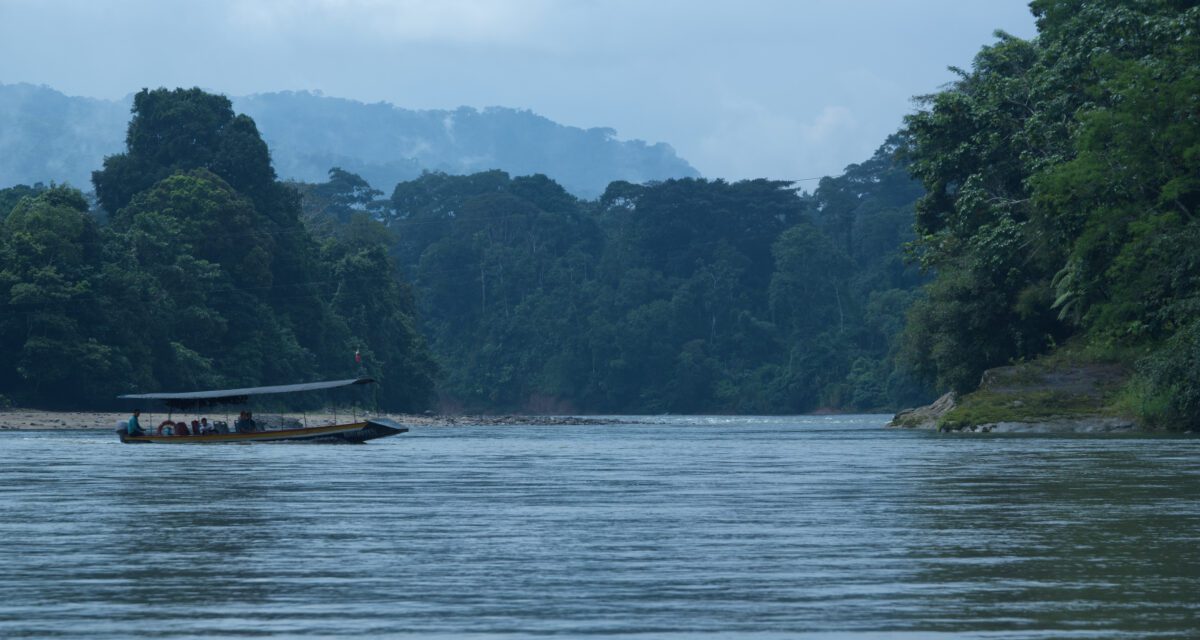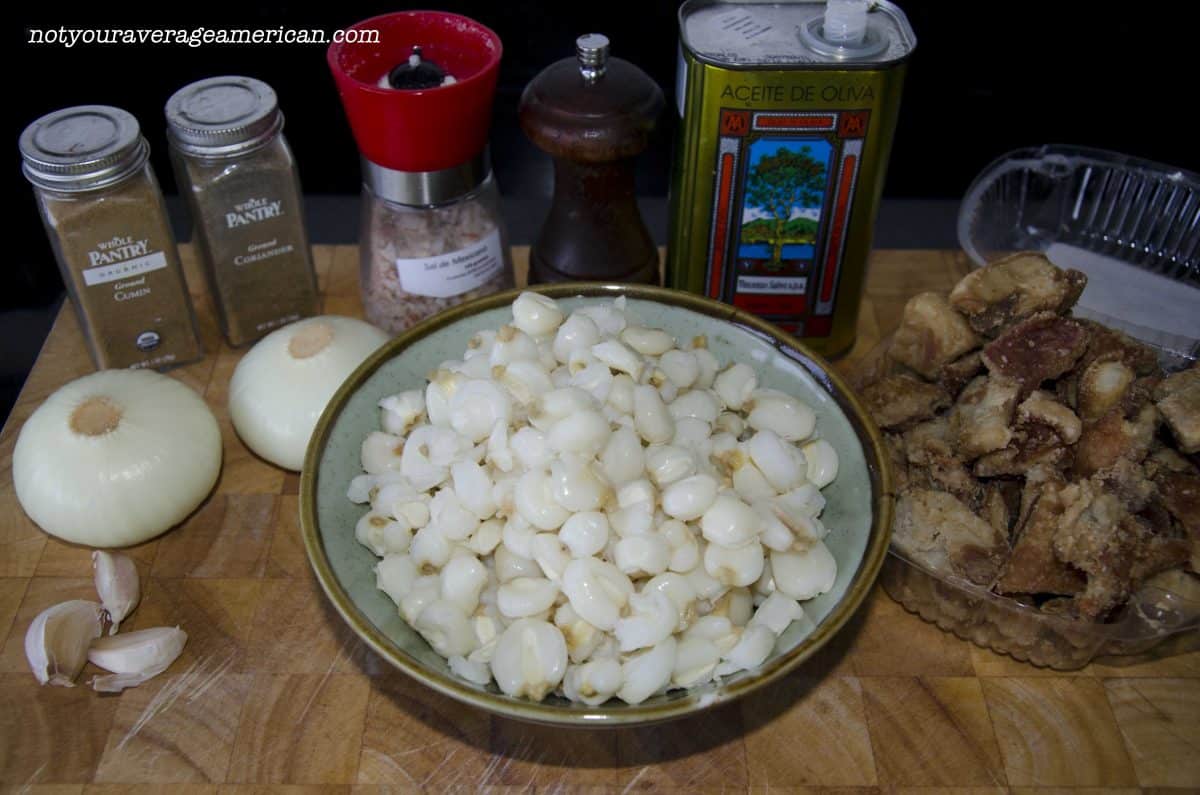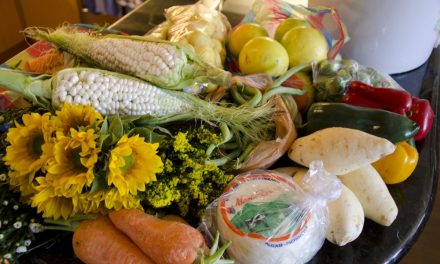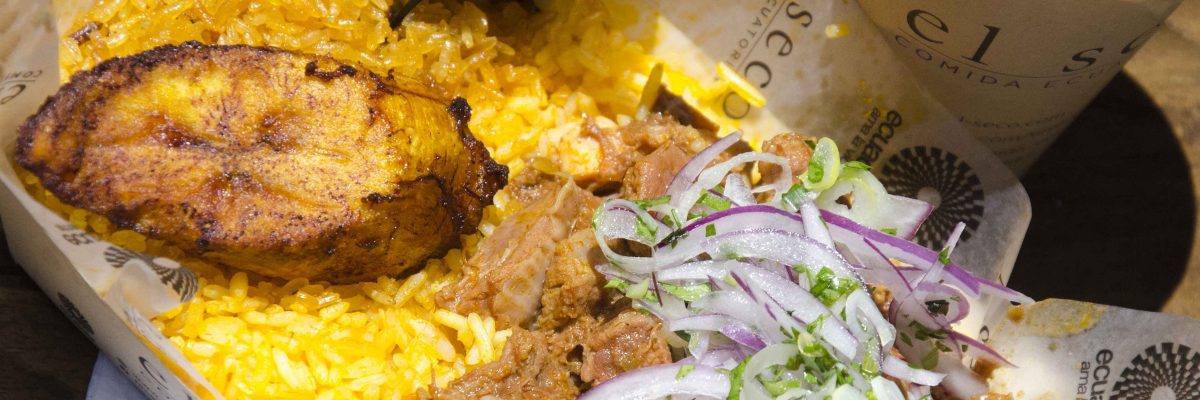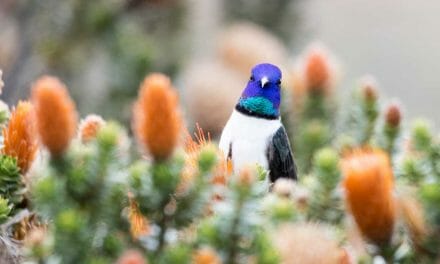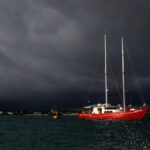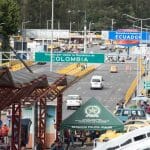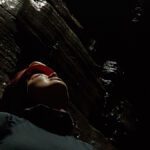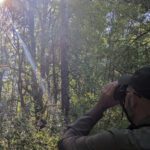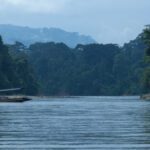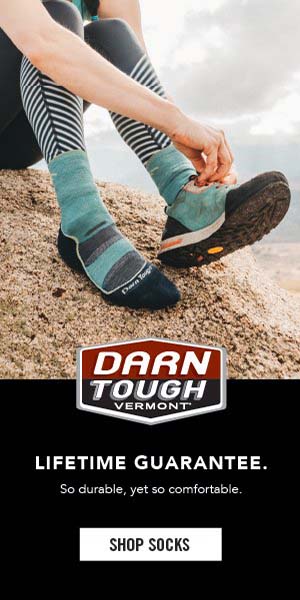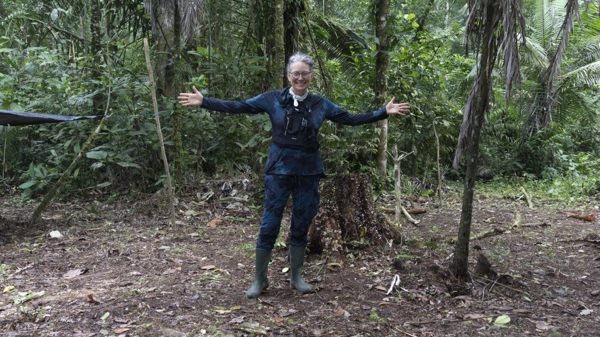As responsible travelers evolve, so do the stories we share.
This article is part of our living archive — trusted content we continue to care for.
First published on September 30, 2025 • Last updated on September 30, 2025.
Ama EcoLodge welcomes guests to experience Ecuador’s Amazon with easy access from Quito, immersive cultural experiences, and a deep respect for the environment. Built during one of the most challenging times for tourism (yes, the pandemic), this small but comfortable lodge sits between primary and secondary forests along the Napo River, offering endless opportunities for birders, naturalists, and intentional travelers to connect with the richness of the Amazon.
Ama’s owner and visionary, Jiovany Rivadeneyra, and is wife, Sonya, are the ultimate hosts. My husband and I stayed only a few days, yet left feeling like old friends. We are not alone—many guests who stay at Ama EcoLodge take home more than memories; they leave with a meaningful connection.
Whether you choose to have Jiovany guide you through Puerto Misahuallí and beyond or set out on your own, here’s why Ama EcoLodge deserves a spot on your itinerary:
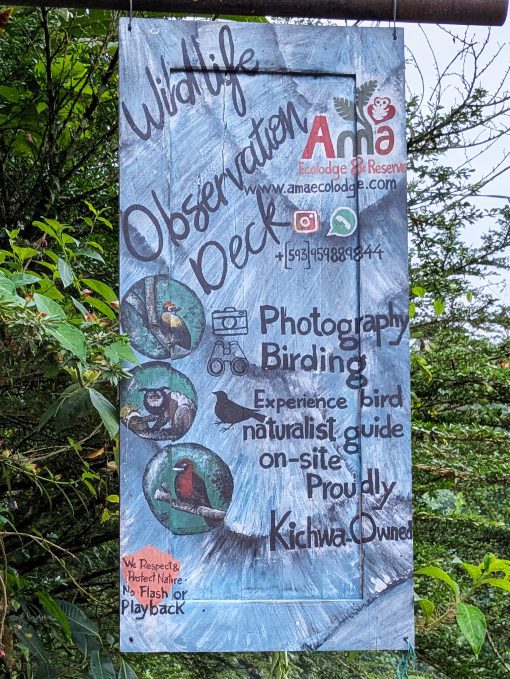
Easy Access – No Flights or Long Boat Rides Necessary
Unlike remote lodges that require a flight to Coca and hours on a motorized canoe, Ama EcoLodge is just across the river from Puerto Misahuallí. You can reach it from the Quito International Airport in just over 4 hours, though we recommend making a day of it, stopping along the way to search for Spectacled Bears, see hummingbirds, and eat lunch in a small, local restaurant. This is an ideal road trip for families and slow travelers. If you’re short on time, leave early and arrive by lunch to have the afternoon free for adventure.
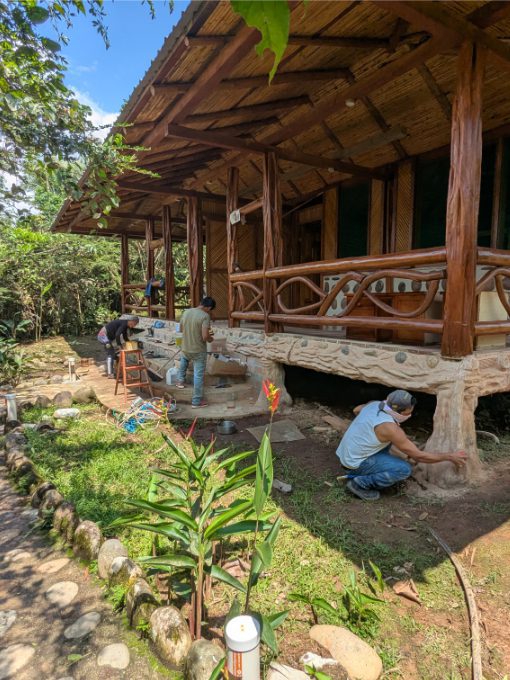
Stay in Spacious, Comfortable Cabañas
Ama EcoLodge currently offers three private cabins nestled in a lush garden setting, , perfect for couples or families. Each cabin features a front porch with chairs and hammock, a screened back porch with outdoor jacuzzi tub, and a spacious bathroom, and comfortable beds. Breakfast is always included.
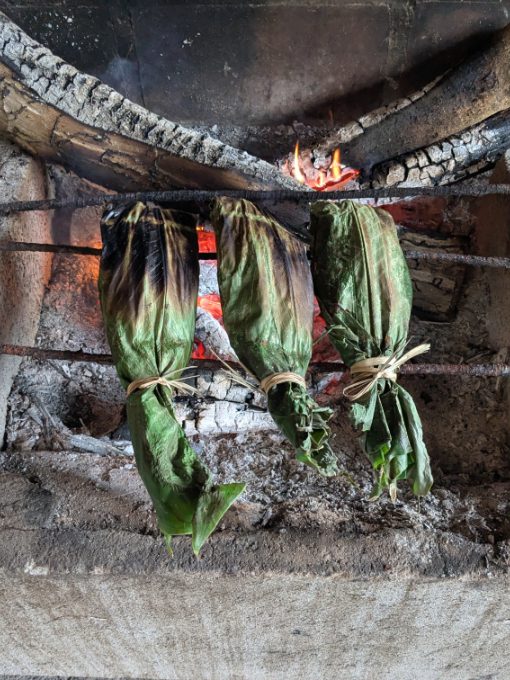
Eat Delicious Meals
The onsite restaurant also serves lunch and dinner with advanced notice, making it easy to enjoy the surroundings without needing to worry about meals.
Our favorite dish was maito, fish (and sometimes chicken), wrapped in bijao leaves cooked over an open fire. Yum! You can also request special diets like vegetarian, vegan, and gluten free.
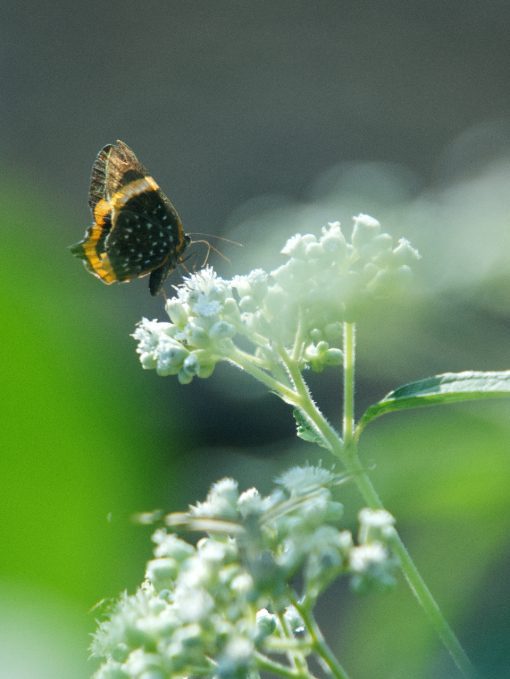
Neighbors include Birds and Butterflies
Though technically located in Puerto Misahuallí, we were surprised at how peaceful and secluded the grounds felt. The property is alive with butterflies and birdlife, full of flowers and greenery, all thriving thanks to a meandering river that Jiovany designed himself (ask about the paiche). Not only does it create privacy from neighboring properties, it also provides habitat for wildlife, including monkeys from the nearby reserve.
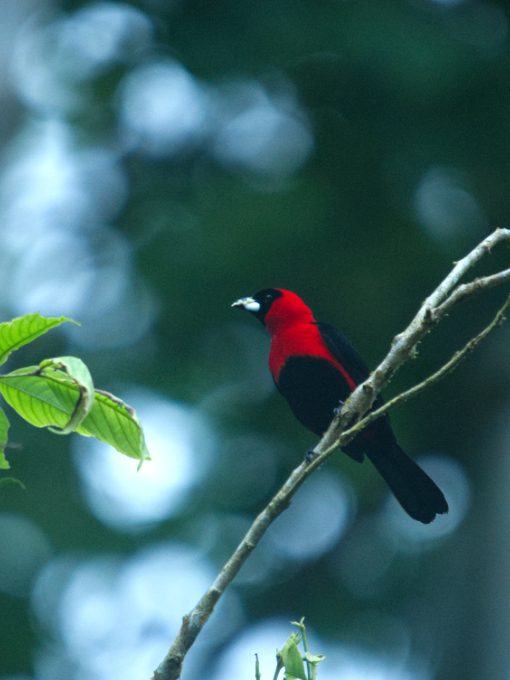
Visit Laguna Paikawe…
Ama EcoLodge is surrounded by its own gardens and borders a stretch of primary forest—home to a variety of bird species and even a few monkeys. You can spend an hour or two birdwatching from the elevated platform at the back of the property, arrange a relaxing canoe ride along the manmade river, or take a short walk next door to Laguna Paikawe, one of our favorite places to wildife from canoe in Puerto Misahuallí.
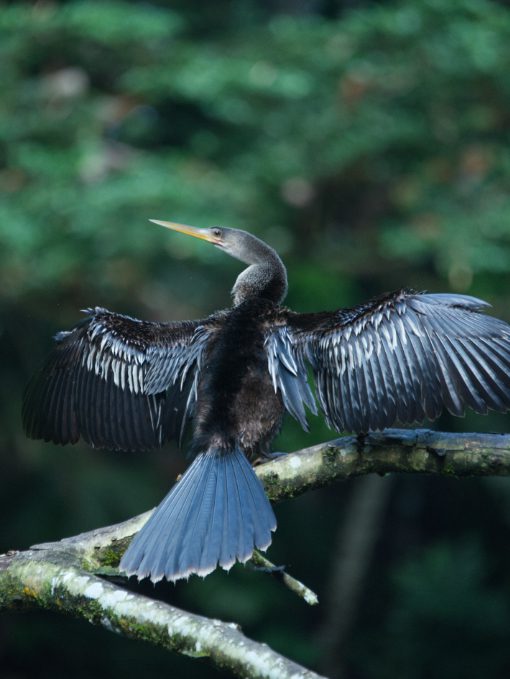
…And Laguna Kawana
Also nearby is the Laguna Kawana Reserve, another canoe-based wildlife experience. Like Paikawe, it offers excellent chances to spot birds and monkeys from a paddle canoe. We recommend asking at the lodge which option is best during your visit—both are fantastic, but factors like water levels, nesting seasons, or recent wildlife sightings might make one the better choice. Or you might decide to do both!
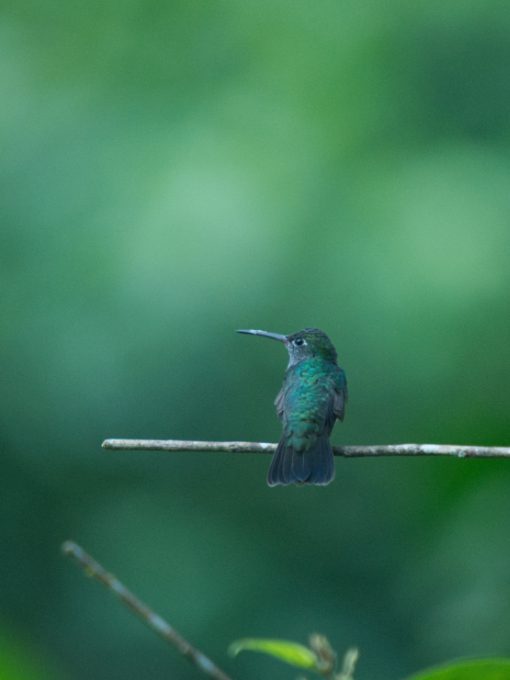
Ask About the Hummingbirds
Many people stay at Ama EcoLodge to see hummingbirds like the Fiery Topaz, located a short canoe ride away, and the seasonal Spangled Coquette (it arrived a short time after our visit). Be sure to ask which hummingbirds are around when making your reservation.
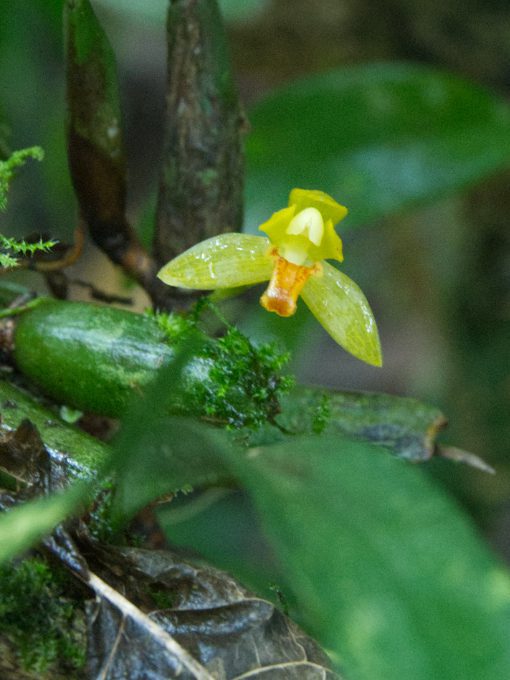
ADMIRE FLOWERING ORCHIDS
Only a short canoe ride downriver from Puerto Misahualli, you can admire dozens of species of flowering orchids at the EcoSelva Orchid Garden. This is a must visit for orchid lovers! It is also a great place for birding, especially early and late in the day, or visits with a local shaman. Ama Ecolodge can help arrange the details.
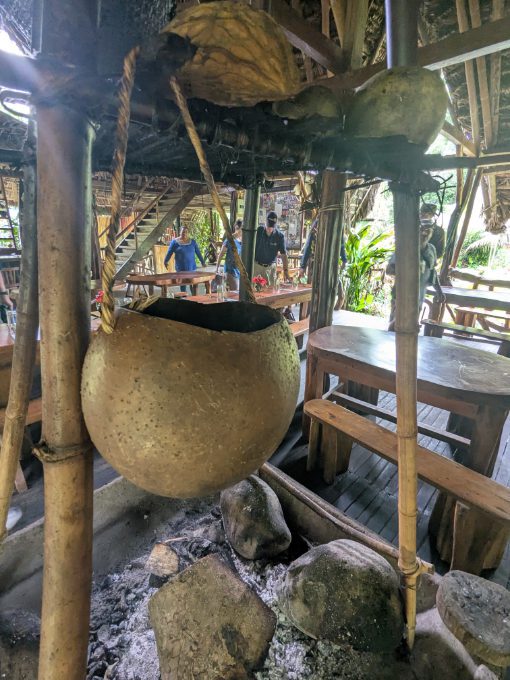
Visit Sinchi Warmi…
Just a short walk from Ama EcoLodge, you’ll find Sinchi-Warmi Lodge, a women-led project offering immersive cultural experiences. Visitors can take part in guayusa tea ceremonies, learn jewelry-making with natural materials, join guided jungle walks, try their hand at preparing chicha, or even stay overnight in their rustic accommodations. (Sinchi-Warmi has even been highlighted by National Geographic in a piece created in partnership with Ecuador Tourism.)
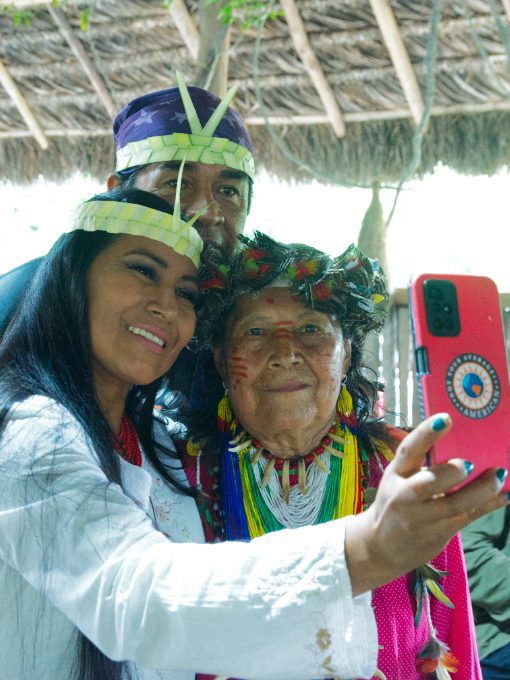
… and Shiripuno
A little further away—but still on the same side of the river—you can visit the Shiripuno Community Tourism Project, another inspiring initiative led by Kichwa women. On our last visit, they hosted an open house where women recited poetry to music, blending tradition with personal expression. On most days, they welcome visitors to learn about daily life in an Amazonian Kichwa community, offering a meaningful window into local culture.
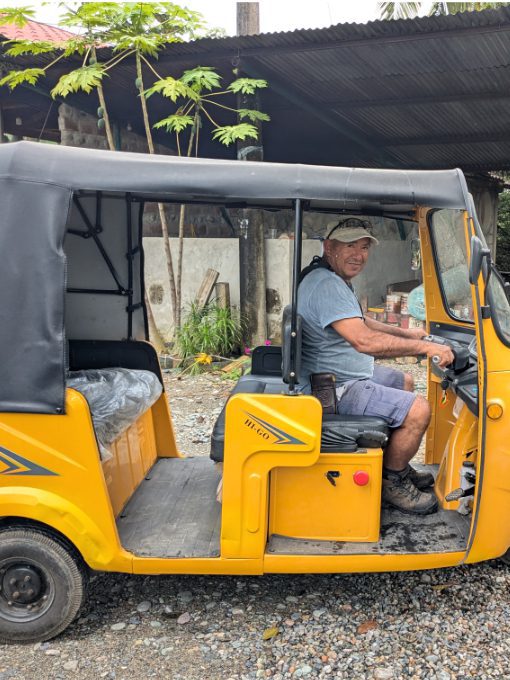
Get Around By Electric Tricycle
Jiovany has also invested in two small electric vehicles, each large enough to shuttle two to four guests around the area. It made for a quick and quiet trip to the nearby Laguna Kawana Reserve.
What surprised us even more was their range. We took one about 20 minutes away, up and down hills on the main highway with nary a problem. That ride led us to a local vanilla farm, where we toured the small, family-run project and purchased fresh vanilla pods to bring home.
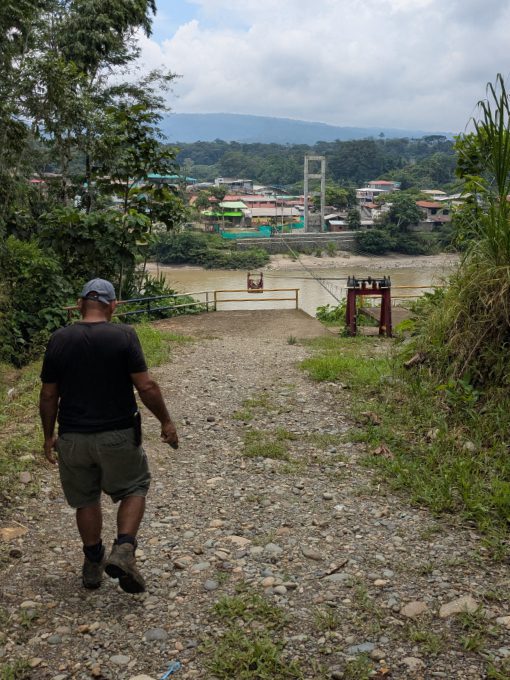
Aerial Tram Crossing Adds to the Adventure
The town of Puerto Misahualli is divided by the Napo River, with the main town on one side and Ama Ecolodge and its neighbors on the other. A few years ago, the bridge collapsed.
While there is an alternate route, it takes about 45 minutes to go around by car. Instead, locals take advantage of an aerial tram that runs most school days and busy weekends.
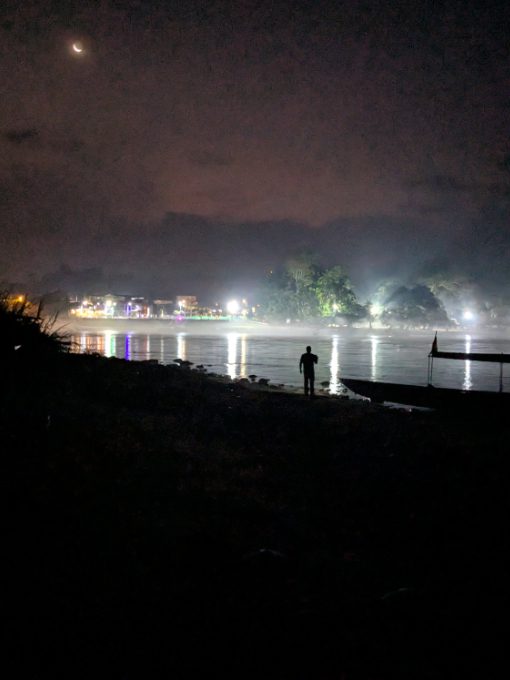
Motor Canoes Are Local Taxis
Alternatively, there are motor canoes waiting on the shore. For a couple of dollars, you can shuttle back and forth fairly easily.
This is especially helpful at night, after dining in Misahuallí. We recommend crossing at least once this way, especially as the fog begins to rise on the water. It’s magical!
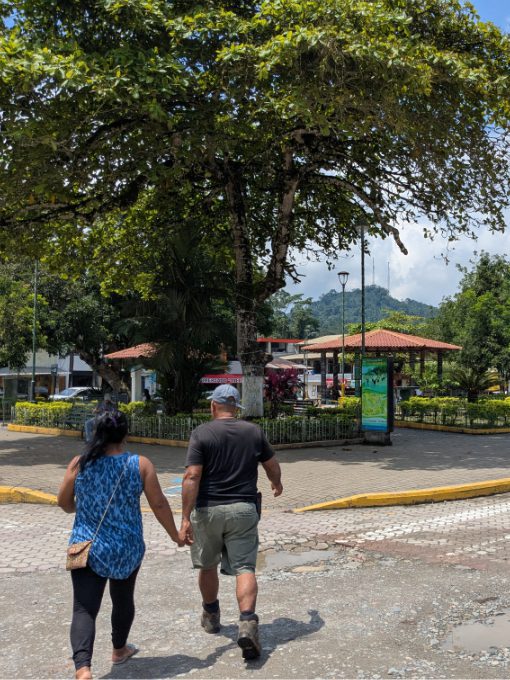
Hang Out in Misahuallí
This small town on the Napo River is full of opportunity. Some of the more typical activities include snapping a photo with the colorful Misahuallí sign—each letter painted with scenes of local biodiversity—or strolling along the Playa de Monos, where locals in traditional costume wait to pose for photos with tourists. You’re also likely to spot monkeys perched on benches or trying their luck at swiping food from an open-air restaurant.
These are only a few suggestions for enjoying your time at Ama EcoLodge. There is so much more you can do!
We can’t thank Jiovany and Sonya enough for their warmth and generosity. We had visited Puerto Misahuallí before, but never felt so welcomed. With their guidance, we discovered just how remarkable the Amazon can be—even from a destination that’s closer and easier to reach.
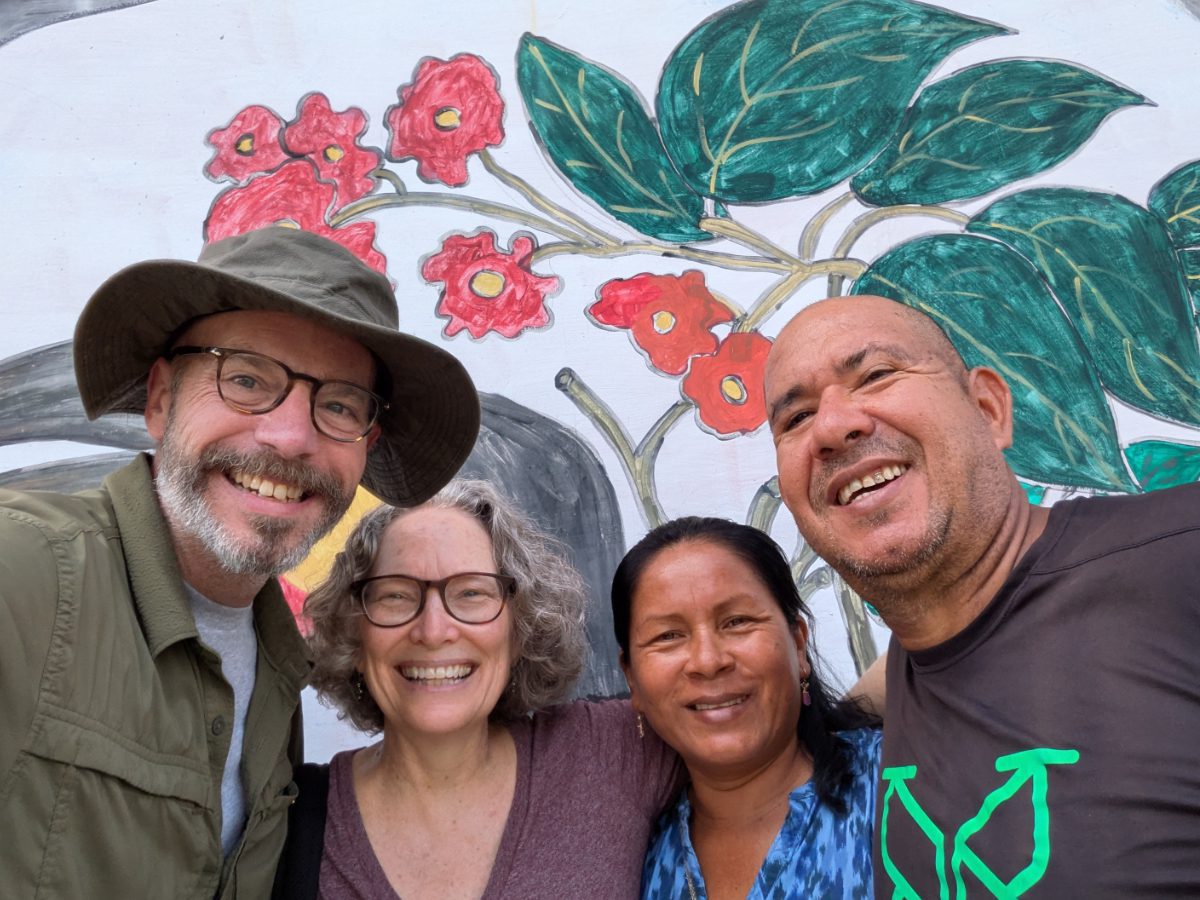
Ama EcoLodge
Your purchase helps support our website.
Angie’s Review: Ama EcoLodge makes it easy to experience Ecuador’s Amazon without the long boat rides required at more remote lodges. The cabins are spacious and comfortable, the gardens are alive with birds and butterflies, and Jiovany is the kind of host who makes you feel like family.
On Booking.com, Ama currently has a 7.6 rating, which partly reflects the challenges they faced during the difficult post-pandemic years. In contrast, they hold a 4.5-star rating on Google, showing how much the guest experience has improved. Our stay was excellent, and we believe many travelers today would agree.
The only note to keep in mind is that construction is still underway behind the cabins. It doesn’t affect the comfort of the cabins themselves, but parts of the project remain unfinished. For us, this was a small trade-off for everything Ama already offers — and for the opportunity to support an Indigenous-owned tourism initiative that continues to grow.

